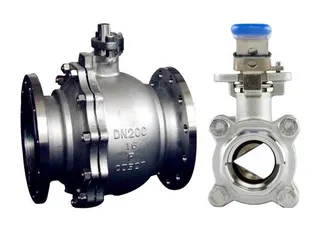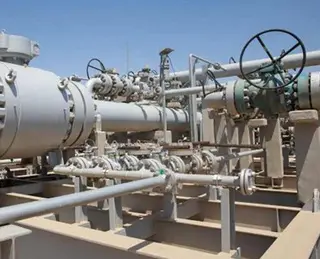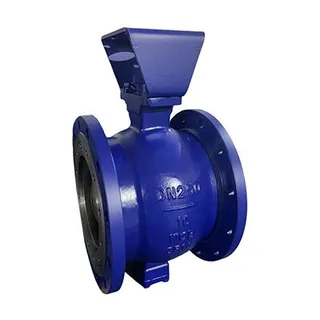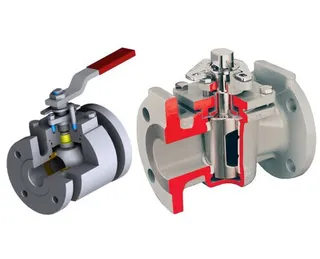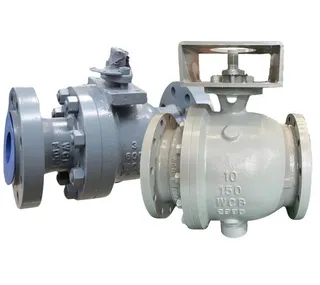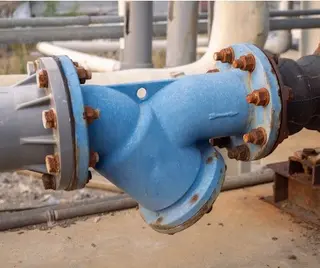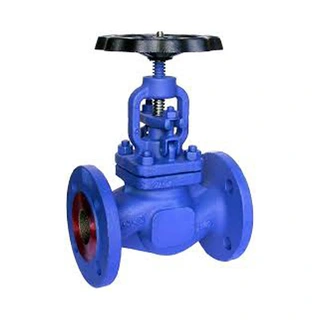O-Type vs. V-Type Ball Valves: Design, Feature & Application
Ball valves are widely used control valves in industrial pipeline systems. While their structural design may vary in different configurations, their fundamental principles and functions are similar. The core component of a ball valve is the ball, which operates by rotating 90 degrees to open or close the valve. Ball valves are primarily used in pipelines for flow control, media direction distribution, and pipeline shutoff. Depending on the working conditions, the sealing performance, fluid resistance, and regulating functions of ball valves may vary. Common types include O-type and V-type ball valves. This article will explore the design characteristics, applications, and advantages of these two types of ball valves.
O-type Ball Valve Overview
The O-type ball valve features a simple and reliable design, making it suitable for controlling various fluid media. The ball inside has a through-hole that matches the diameter of the pipeline. By rotating 90°, the ball alters the direction of the hole, thereby opening or closing the valve. Typically, the valve seat is made from elastic materials like PTFE to ensure a good sealing performance.

1. Design Features of O-type Ball Valve
Simple Structure: The valve body is usually straight-through, and the ball's opening matches the pipeline diameter, resulting in minimal fluid resistance and reducing energy loss in the system.
Self-lubricating Design: The ball and valve seat are made from self-lubricating materials with a low coefficient of friction, reducing wear and torque while ensuring long-term stable operation.
Superior Sealing Performance: The valve seat is typically made from PTFE or similar elastic materials, providing excellent sealing properties that prevent leakage even after long-term use.
Quick Opening and Closing: The O-type ball valve can be fully opened or closed with a 90° rotation, offering fast response to control needs.
2. Advantages of O-type Ball Valve
Low Fluid Resistance: With the ball's opening matching the pipeline diameter, the O-type ball valve has very low fluid resistance, which helps reduce system energy loss.
Easy Operation: A 90° rotation is all that is needed to open or close the valve, making the operation simple and quick.
High Reliability: The seal between the ball and valve seat is maintained through pre-tensioning, preventing friction damage. It is suitable for transporting high-pressure, high-risk media like petroleum and natural gas.
Long Service Life: The self-lubricating properties of PTFE reduce friction and extend the valve's lifespan, particularly under extreme conditions.
High Sealing Integrity: The O-type ball valve offers bi-directional sealing, effectively preventing fluid leakage, making it ideal for applications requiring high sealing performance.
3. Applications of O-type Ball Valve
O-type ball valves are suitable for flow control, shutoff, and distribution, especially in systems requiring quick opening and high sealing performance. They are commonly used in pipeline control systems in industries such as chemical, petroleum, natural gas, electricity, as well as water treatment and supply systems.
V-type Ball Valve Overview
The V-type ball valve differs from the O-type ball valve by incorporating a V-shaped notch in the ball. This design makes it more effective for fluid regulation and under special operating conditions. The ball core is typically a 1/4 ball shell, and the V-shaped notch enables the valve to handle larger flow rates and provide a wider range of adjustments, especially for fluids containing solid particles or fibers.
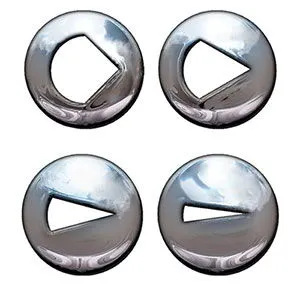
1. Design Features of V-type Ball Valve
V-Shaped Notch Structure: The V-shaped notch in the ball effectively cuts through impurities in the fluid, such as fibers and solid particles. This design minimizes the risk of blockage during closing, greatly enhancing the valve's stability.
Flow Regulation Function: The V-type ball valve offers a high flow capacity and a broad adjustment range, allowing for precise flow control. The contact between the V-shaped notch and the valve seat generates a scissor-like action, cutting through impurities while maintaining a seal.
High Shearing Force: When in operation, the V-type structure of the ball interacts with the valve seat, creating a shearing force that is ideal for handling fluids with fibers or solid materials.
Easy Maintenance: V-type ball valves typically use flange connections, making disassembly simple without special tools, which facilitates maintenance and component replacement.
2. Advantages of V-type Ball Valve
Self-Cleaning Function: The V-type ball valve can effectively remove impurities between the valve seat and ball, preventing seal failure due to blockages from common contaminants.
Precise Flow Control: When used with actuators and positioners, the V-type ball valve can achieve precise flow regulation, making it suitable for applications requiring high-precision adjustments.
High Shearing Ability: The shearing action between the V-shaped notch and valve seat can effectively cut through fibers and solid particles in the fluid, ensuring stable operation over time.
Stable Operation: The double-bearing structure of the V-type ball valve results in low operating torque, providing a sensitive and stable response, making it ideal for controlling gases, liquids, and steam.
3. Applications of V-type Ball Valve
The V-type ball valve is particularly effective in fluid conditions involving solid particles, fibrous substances, or precise flow regulation. It is widely used in industries such as papermaking, chemicals, food processing, and wastewater treatment, where it can handle the effects of impurities on valve performance while providing accurate flow control.
Comparison of O-type and V-type Ball Valves
|
Feature |
O-type Ball Valve |
V-type Ball Valve |
|
Structural Design |
Ball with a through-hole, suitable for flow control and shutoff |
Ball with a V-shaped notch, suitable for flow regulation and impurity cutting |
|
Sealing Performance |
Good, bi-directional sealing |
Excellent, suitable for media containing fibers or solid particles |
|
Flow Regulation |
Typically quick shutoff |
Adjustable flow with shearing ability |
|
Suitable Media |
Ideal for clean fluids, commonly used for quick shutoff |
Ideal for fluids containing impurities or fibers |
|
Ease of Maintenance |
Simple, common flange connection |
Simple disassembly, easy maintenance |
Conclusion
O-type and V-type ball valves each have distinct characteristics and are suited to different operating conditions. The O-type ball valve excels in fluid control, sealing performance, and switching speed, making it ideal for applications that require quick shutoff and high sealing integrity. In contrast, the V-type ball valve, with its unique V-shaped notch and high shearing capability, is particularly suited for handling fluids containing solid impurities, fibers, or requiring precise flow adjustment. Both types complement each other in practical applications, and selecting the appropriate valve based on the characteristics of the fluid and operational needs ensures system stability and long-term operational efficiency.
Send your message to this supplier
Related Articles from the Supplier
Features and Installation of V-type ball valve
- Dec 14, 2024
Full Bore Ball Valves vs. Reduced Bore Ball Valves
- Oct 27, 2025
Complete Installation Guide for Y-Type Strainers
- Nov 06, 2025
Related Articles from China Manufacturers
Contrasts Between O-Type and V-Type Ball Valves
- Nov 30, 2023
Electric V-Type Ball Valves: A Comprehensive Guide
- Jul 16, 2025
The Differences Between Ball Valves and Globe Valves
- May 10, 2019
The Advantages of V-type Ball valves
- Jul 31, 2019
Related Products Mentioned in the Article
Zhejiang Kosen Valve Co., Ltd.
- https://www.kosenvalve.com/
- Address: Dongou Industrial Zone, Oubei, Wenzhou, Zhejiang, China
- Phone: 86 577 5798 7171
- Business Type: Industry & Trading, Manufacturer,
Supplier Website
Source: https://www.kosenvalve.com/media-hub/o-type-vs-v-type-ball-valves-design-feature-application.html

